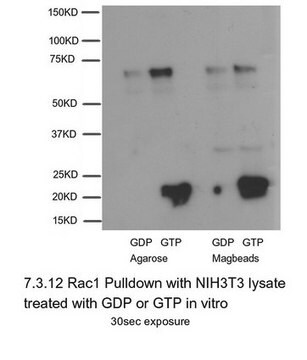모든 사진(1)
About This Item
Linear Formula:
H(OCH2CH2)nOH
CAS Number:
MDL number:
UNSPSC 코드:
12352104
PubChem Substance ID:
NACRES:
NA.23
추천 제품
제품명
Poly(ethylene glycol), average Mn 300
양식
viscous liquid
Quality Level
분자량
Mn 285-315
average Mn 300
refractive index
n20/D 1.463
pH
6-7 (23 °C, at 10 g/l)
점도
5.8 cSt(210 °F)(lit.)
mp
−15-−8 °C (lit.)
density
1.125 g/mL at 25 °C
Mw/Mn
1.1 (typical)
Ω-끝
hydroxyl
α-끝
hydroxyl
SMILES string
C(CO)O
InChI
1S/C2H6O2/c3-1-2-4/h3-4H,1-2H2
InChI key
LYCAIKOWRPUZTN-UHFFFAOYSA-N
유사한 제품을 찾으십니까? 방문 제품 비교 안내
일반 설명
Polyethylene glycol (PEG) is a hydrophilic polymer. It can be easily synthesized by the anionic ring opening polymerization of ethylene oxide, into a range molecular weights and variety of end groups. When crosslinked into networks, PEG can have high water content, forming "hydrogels". Hydrogel formation can be initiated by either crosslinking PEG by ionizing radiation or by covalent crosslinking of PEG macromers with reactive chain ends. PEG is a suitable material for biological applications because it does not trigger an immune response.
애플리케이션
- PEG modification increases thermostability and inhibitor resistance of Bst DNA polymerase.: This study demonstrates that polyethylene glycol (PEG) modification significantly enhances the thermostability and inhibitor resistance of Bst DNA polymerase, highlighting PEG′s potential in improving enzyme performance for biotechnological applications (Yang et al., 2024).
- Development of Lyophilized Eukaryotic Cell-Free Protein Expression System Based on Leishmania tarentolae.: The incorporation of PEG in the lyophilization process of a cell-free protein expression system demonstrates its role in enhancing the stability and efficiency of biotechnological workflows (Alfaro-Palma et al., 2024).
- A comprehensive review on singlet oxygen generation in nanomaterials and conjugated polymers for photodynamic therapy in the treatment of cancer.: This review highlights the application of PEGylated nanomaterials in photodynamic therapy, emphasizing its significance in improving biocompatibility and therapeutic efficacy in cancer treatments (Singh et al., 2024).
Storage Class Code
10 - Combustible liquids
WGK
WGK 1
Flash Point (°F)
428.0 °F - closed cup
Flash Point (°C)
220.00 °C - closed cup
개인 보호 장비
Eyeshields, Gloves
이미 열람한 고객
Plasticizing collagen hydrolysate with glycerol and low-molecular weight poly(ethylene glycols)
Langmaier F, et al.
Thermochimica Acta, 469(1-2), 52-58 (2008)
Developing perylene diimide based acceptor polymers for organic photovoltaics
Liang Z, et al.
Synthetic Metals, 161(11-12), 1014-1021 (2011)
Anju Singh et al.
Scientific reports, 10(1), 3766-3766 (2020-03-01)
Th17 cells are critical drivers of autoimmune diseases and immunopathology. There is an unmet need to develop therapies targeting pathogenic Th17 cells for the treatment of autoimmune disorders. Here, we report that anxiolytic FGIN-1-27 inhibits differentiation and pathogenicity of Th17
Rheological studies of disulfonated poly(arylene ether sulfone) plasticized with poly(ethylene glycol) for membrane formation
Oh HJ, et al.
Polymer, 55(6), 1574-1582 (2014)
Ofer Beharier et al.
Proceedings of the National Academy of Sciences of the United States of America, 117(44), 27319-27328 (2020-10-23)
The recently identified ferroptotic cell death is characterized by excessive accumulation of hydroperoxy-arachidonoyl (C20:4)- or adrenoyl (C22:4)- phosphatidylethanolamine (Hp-PE). The selenium-dependent glutathione peroxidase 4 (GPX4) inhibits ferroptosis, converting unstable ferroptotic lipid hydroperoxides to nontoxic lipid alcohols in a tissue-specific manner.
문서
Universal Platform for Surface Modification Employing Grafted Polymer Layers
The present publication focuses on synthesis and characterization of nanothick, chemically grafted polymer films (polymer brushes) on various inorganic and polymeric substrates.
Global Trade Item Number
| SKU | GTIN |
|---|---|
| 202371-250G | 4061838764850 |
| 202371-500G | 4061838764867 |
| 202371-20KG | 4061838137999 |
| 202371-5G | 4061838764874 |
| 202371-1KG | 4061838764843 |
자사의 과학자팀은 생명 과학, 재료 과학, 화학 합성, 크로마토그래피, 분석 및 기타 많은 영역을 포함한 모든 과학 분야에 경험이 있습니다..
고객지원팀으로 연락바랍니다.

